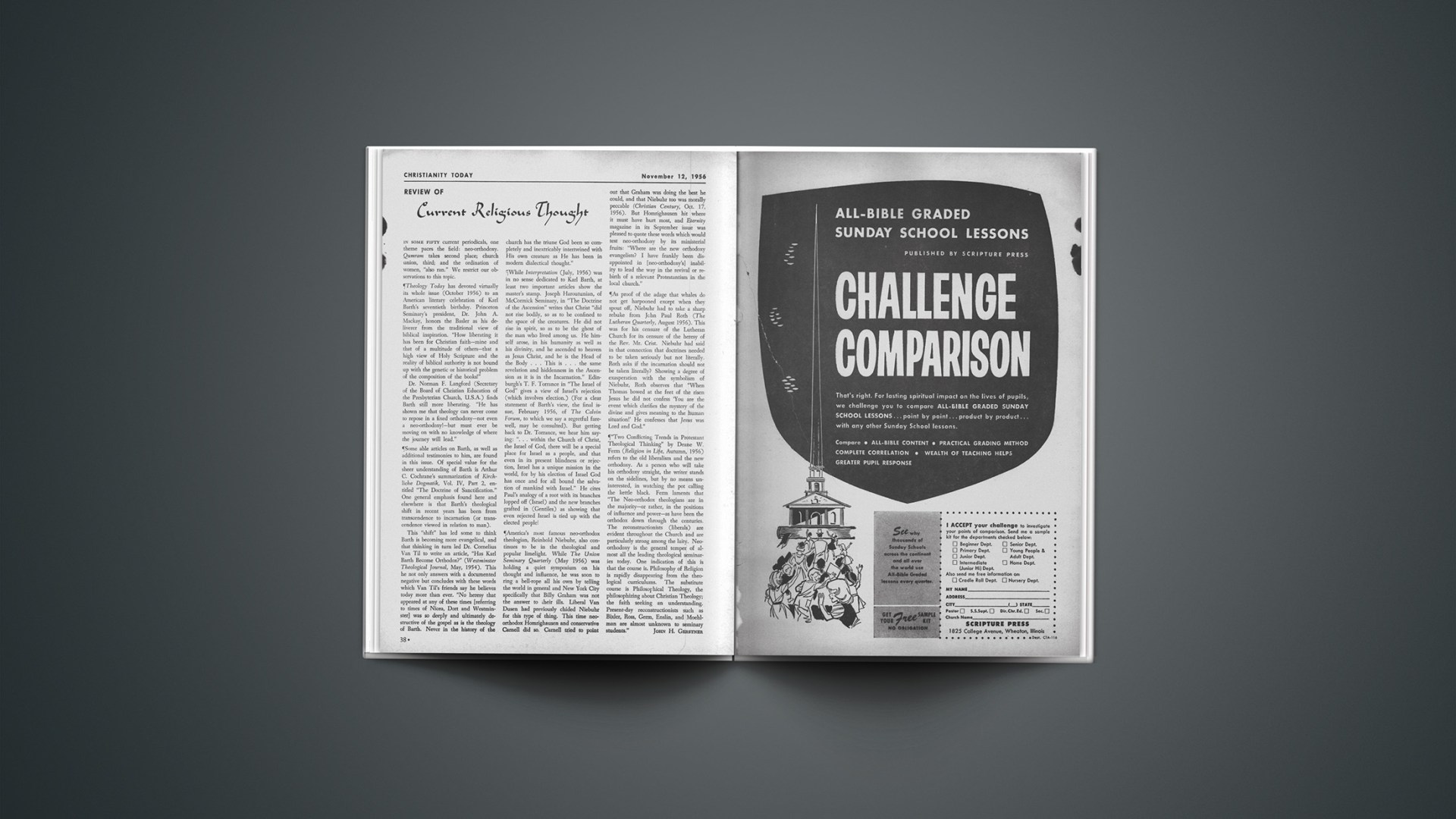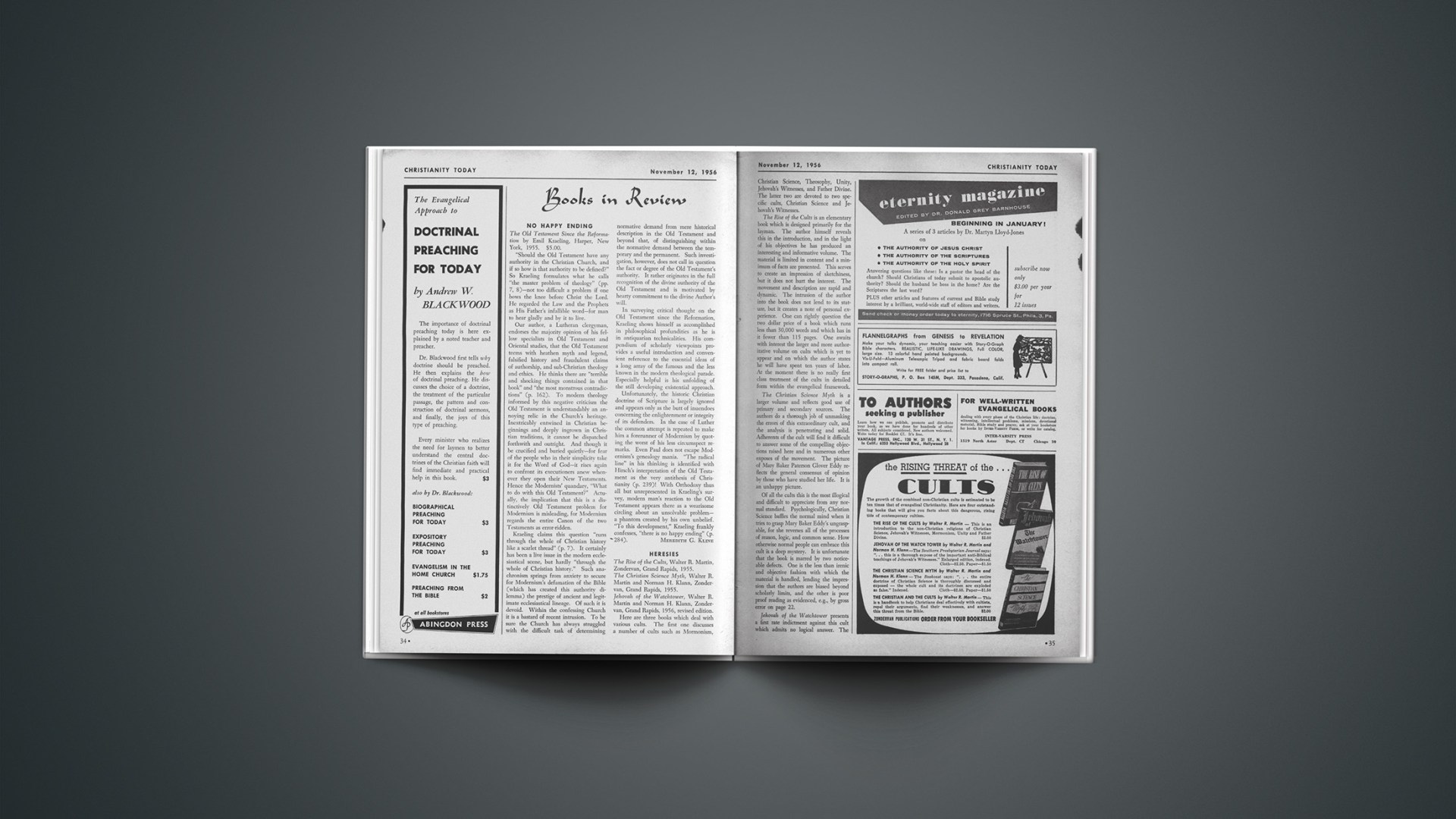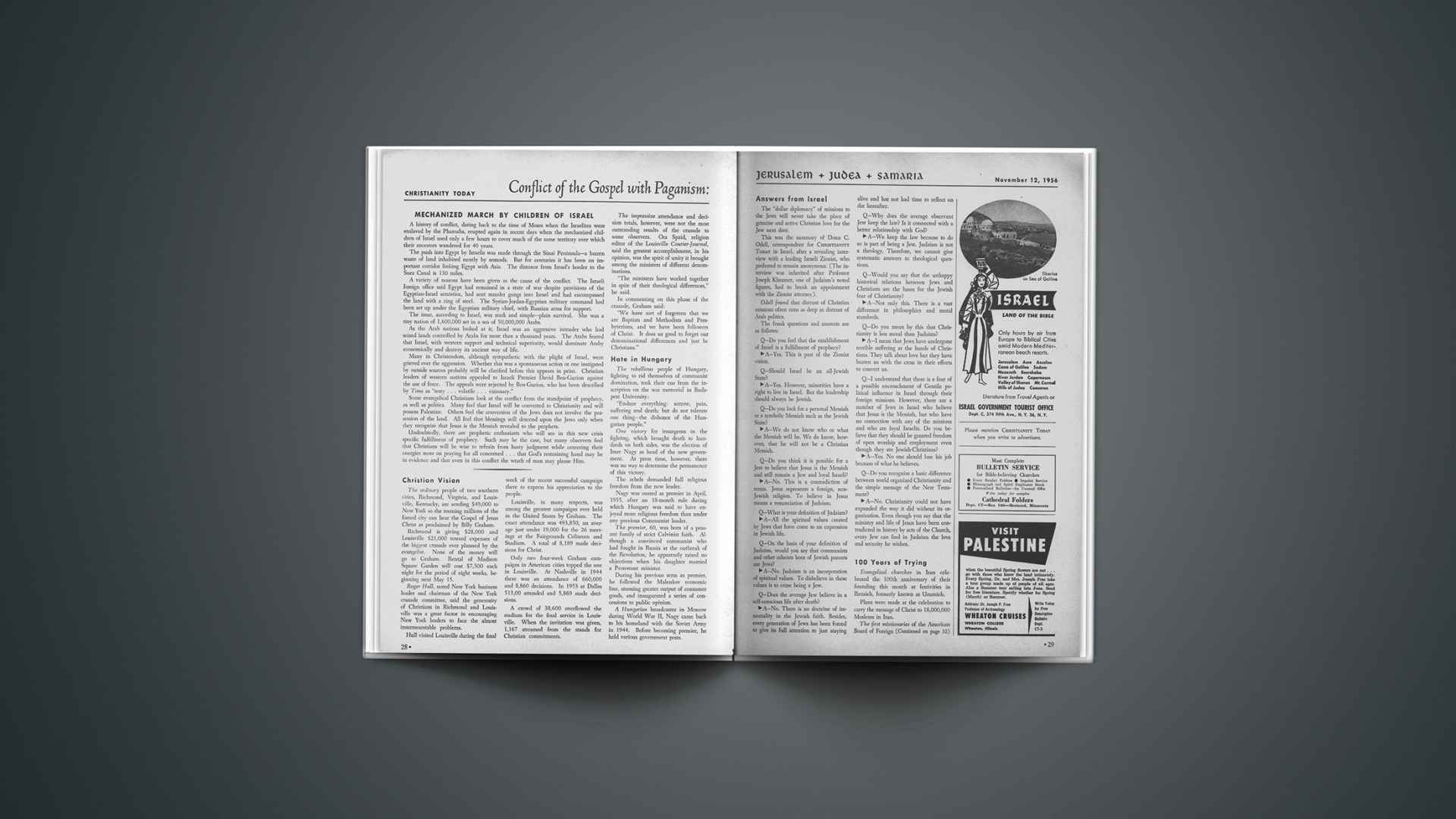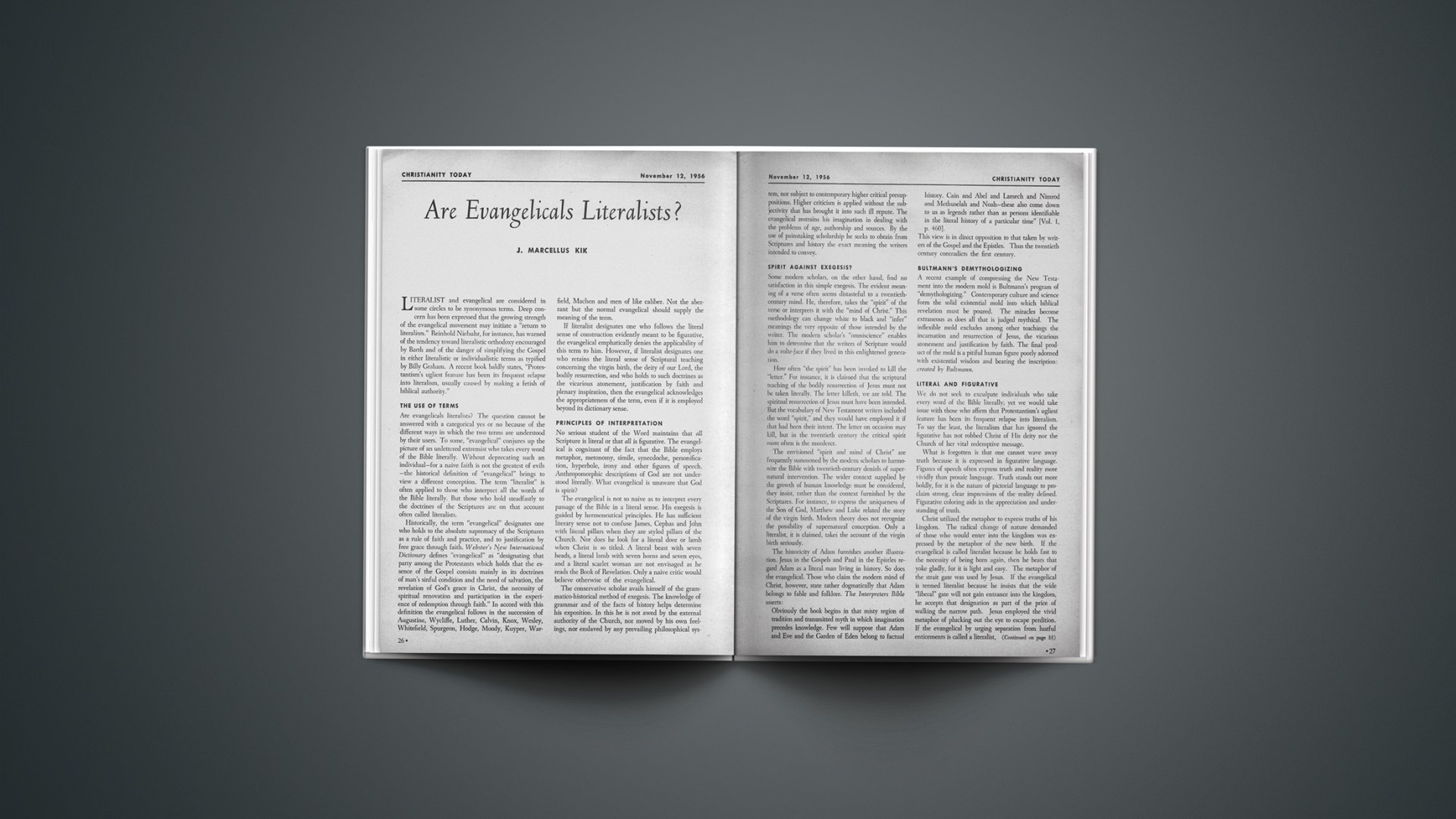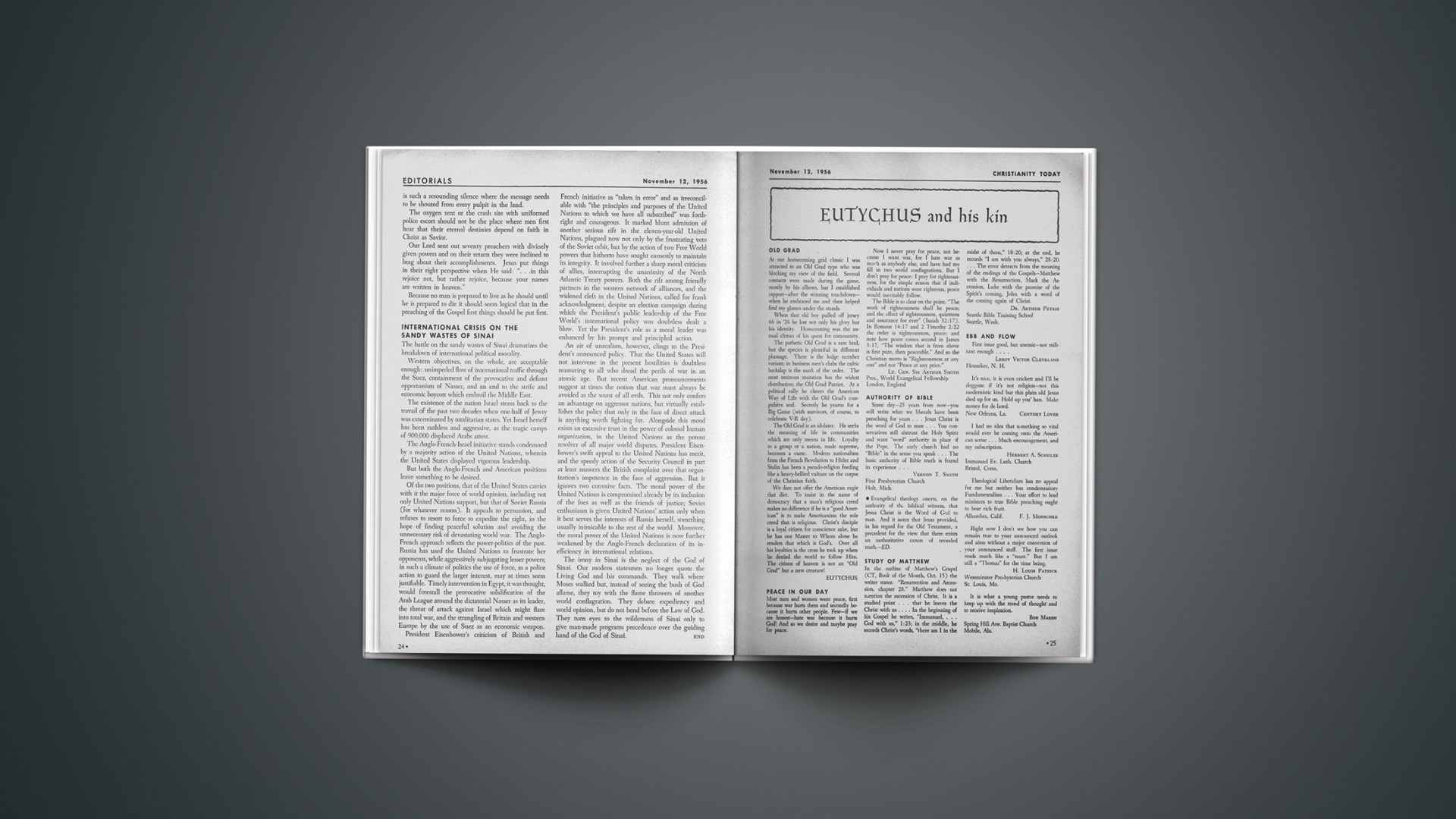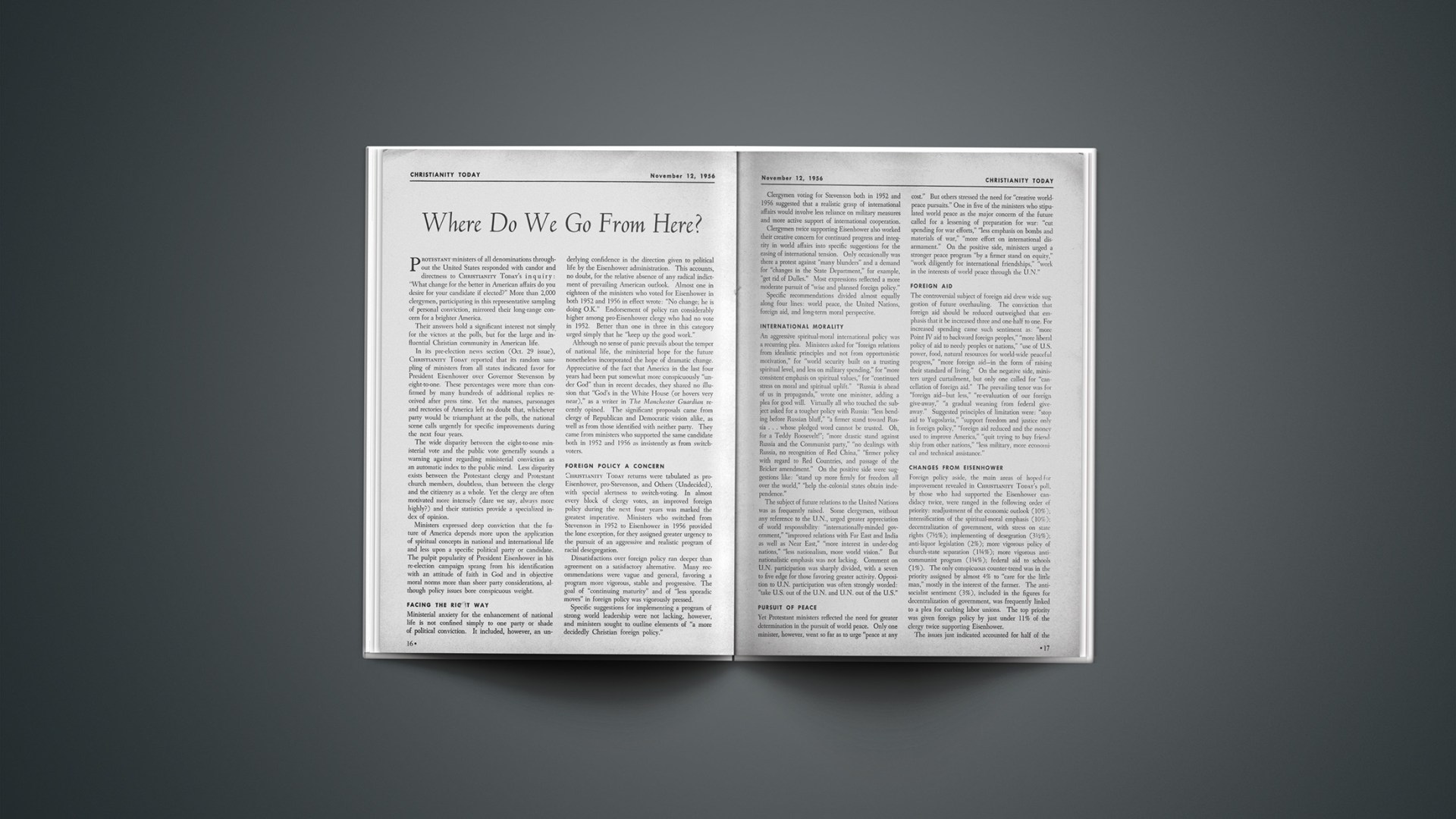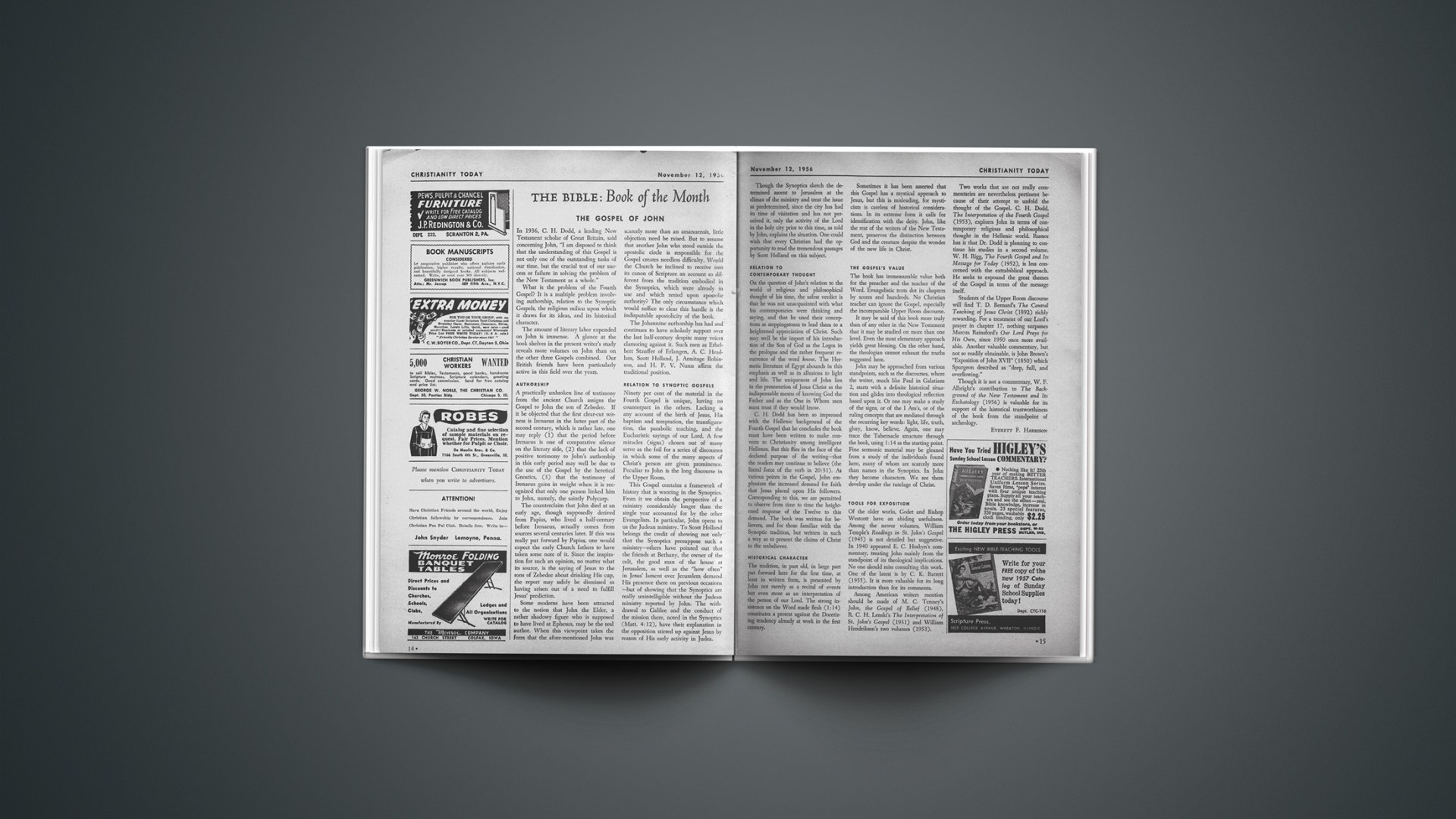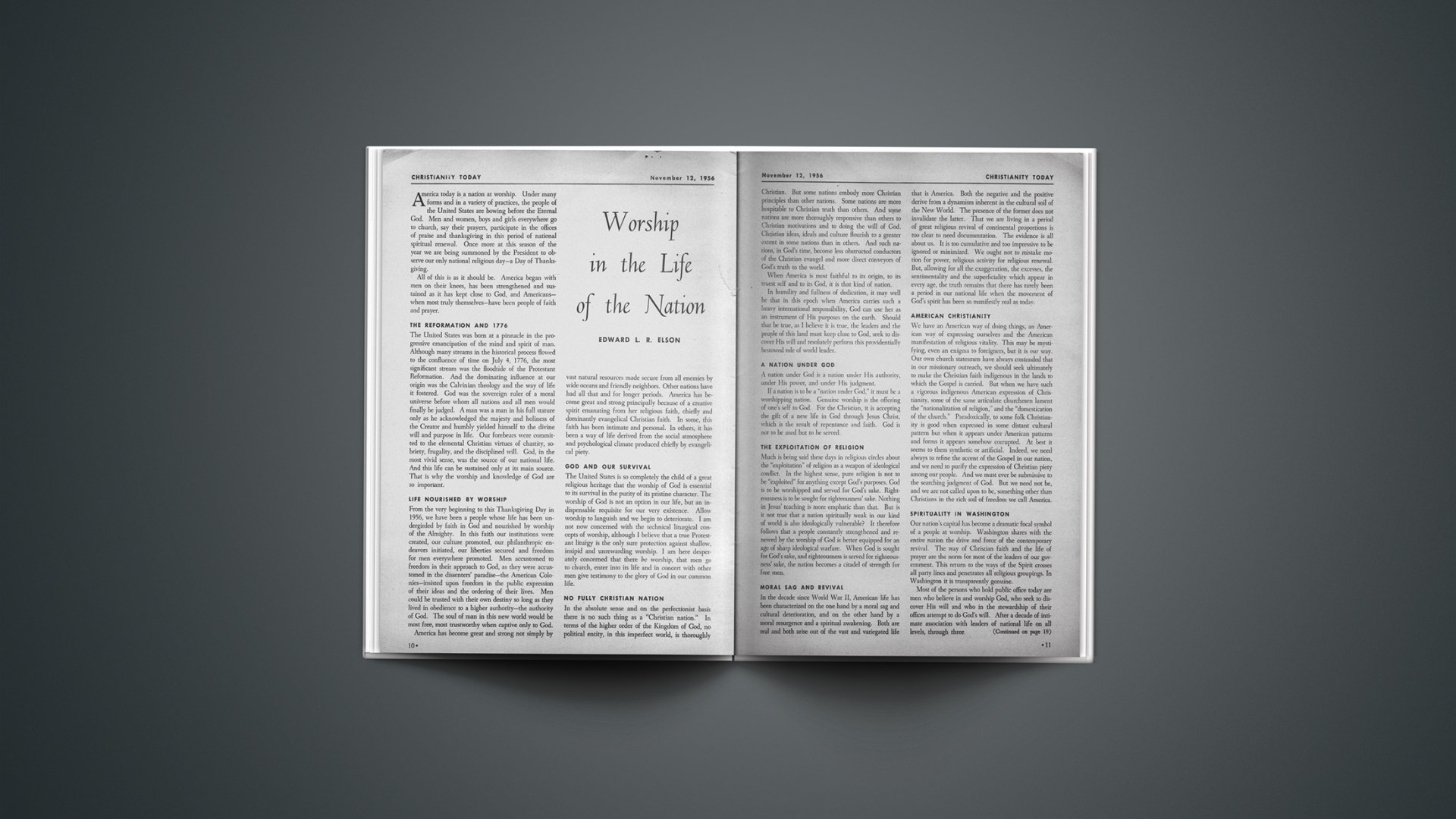In some fifty current periodicals, one theme paces the field: neo-orthodoxy. Qumram takes second place; church union, third; and the ordination of women, “also ran.” We restrict our observations to this topic.
Theology Today has devoted virtually its whole issue (October 1956) to an American literary celebration of Karl Barth’s seventieth birthday. Princeton Seminary’s president, Dr. John A. Mackay, honors the Basler as his deliverer from the traditional view of biblical inspiration. “How liberating it has been for Christian faith—mine and that of a multitude of others—that a high view of Holy Scripture and the reality of biblical authority is not bound up with the genetic or historical problem of the composition of the books!”
Dr. Norman F. Langford (Secretary of the Board of Christian Education of the Presbyterian Church, U.S.A.) finds Barth still more liberating. “He has shown me that theology can never come to repose in a fixed orthodoxy—not even a neo-orthodoxy!—but must ever be moving on with no knowledge of where the journey will lead.”
¶ Some able articles on Barth, as well as additional testimonies to him, are found in this issue. Of special value for the sheer understanding of Barth is Arthur C. Cochrane’s summarization of Kirchliche Dogmatik, Vol. IV, Part 2, entitled “The Doctrine of Sanctification.” One general emphasis found here and elsewhere is that Barth’s theological shift in recent years has been from transcendence to incarnation (or transcendence viewed in relation to man).
This “shift” has led some to think Barth is becoming more evangelical, and that thinking in turn led Dr. Cornelius Van Til to write an article, “Has Karl Barth Become Orthodox?” (Westminster Theological Journal, May, 1954). This he not only answers with a documented negative but concludes with these words which Van Til’s friends say he believes today more than ever. “No heresy that appeared at any of these times [referring to times of Nicea, Dort and Westminster] was so deeply and ultimately destructive of the gospel as is the theology of Barth. Never in the history of the church has the triune God been so completely and inextricably intertwined with His own creature as He has been in modern dialectical thought.”
While Interpretation (July, 1956) was in no sense dedicated to Karl Barth, at least two important articles show the master’s stamp. Joseph Haroutunian, of McCormick Seminary, in “The Doctrine of the Ascension” writes that Christ “did not rise bodily, so as to be confined to the space of the creatures. He did not rise in spirit, so as to be the ghost of the man who lived among us. He himself arose, in his humanity as well as his divinity, and he ascended to heaven as Jesus Christ, and he is the Head of the Body … This is … the same revelation and hiddenness in the Ascension as it is in the Incarnation.” Edinburgh’s T. F. Torrance in “The Israel of God” gives a view of Israel’s rejection (which involves election.) (For a clear statement of Barth’s view, the final issue, February 1956, of The Calvin Forum, to which we say a regretful farewell, may be consulted). But getting back to Dr. Torrance, we hear him saying: “… within the Church of Christ, the Israel of God, there will be a special place for Israel as a people, and that even in its present blindness or rejection, Israel has a unique mission in the world, for by his election of Israel God has once and for all bound the salvation of mankind with Israel.” He cites Paul’s analogy of a root with its branches lopped off (Israel) and the new branches grafted in (Gentiles) as showing that even rejected Israel is tied up with the elected people!
¶ America’s most famous neo-orthodox theologian, Reinhold Niebuhr, also continues to be in the theological and popular limelight. While The Union Seminary Quarterly (May 1956) was holding a quiet symposium on his thought and influence, he was soon to ring a bell-rope all his own by telling the world in general and New York City specifically that Billy Graham was not the answer to their ills. Liberal Van Dusen had previously chided Niebuhr for this type of thing. This time neo-orthodox Homrighausen and conservative Carnell did so. Carnell tried to point out that Graham was doing the best he could, and that Niebuhr too was morally peccable (Christian Century, Oct. 17, 1956). But Homrighausen hit where it must have hurt most, and Eternity magazine in its September issue was pleased to quote these words which would test neo-orthodoxy by its ministerial fruits: “Where are the new orthodoxy evangelists? I have frankly been disappointed in [neo-orthodoxy’s] inability to lead the way in the revival or rebirth of a relevant Protestantism in the local church.”
¶ As proof of the adage that whales do not get harpooned except when they spout off, Niebuhr had to take a sharp rebuke from John Paul Roth (The Lutheran Quarterly, August 1956). This was for his censure of the Lutheran Church for its censure of the heresy of the Rev. Mr. Crist. Niebuhr had said in that connection that doctrines needed to be taken seriously but not literally. Roth asks if the incarnation should not be taken literally? Showing a degree of exasperation with the symbolism of Niebuhr, Roth observes that “When Thomas bowed at the feet of the risen Jesus he did not confess ‘You are the event which clarifies the mystery of the divine and gives meaning to the human situation!’ He confesses that Jesus was Lord and God.”
¶ “Two Conflicting Trends in Protestant Theological Thinking” by Deane W. Ferm (Religion in Life, Autumn, 1956) refers to the old liberalism and the new orthodoxy. As a person who will take his orthodoxy straight, the writer stands on the sidelines, but by no means uninterested, in watching the pot calling the kettle black. Ferm laments that “The Neo-orthodox theologians are in the majority—or rather, in the positions of influence and power—as have been the orthodox down through the centuries. The reconstructionists (liberals) are evident throughout the Church and are particularly strong among the laity. Neo-orthodoxy is the general temper of almost all the leading theological seminaries today. One indication of this is that the course in Philosophy of Religion is rapidly disappearing from the theological curriculums. The substitute course is Philosophical Theology, the philosophizing about Christian Theology; the faith seeking an understanding. Present-day reconstructionists such as Bixler, Ross, Germ, Enslin, and Moehlman are almost unknown to seminary students.”

